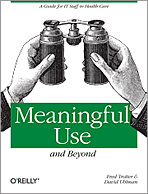Apache Web Server, GNU/Linux Operating System, MySQL Database, Mozilla’s Firefox Browser.
All pillars among the open-source community.
Each of these deserves its imminent position as a venerated project. Each has changed the world, and not a little. Moreover, they are the projects that spring to mind when we seek to justify the brilliance of the open-source licensing and development models.
But if this is intended to be a list of the highest-impact and most significant open-source projects, there is a project missing from this list.
VA VistA is arguably the best electronic health record (EHR) in existence. It was developed over the course of several decades by federal employees in a collaborative, open-source fashion. Because it was developed by the U.S. government, it is available under the Freedom of Information Act (FOIA) in the public domain. VistaA has served as the basis for several open-source and proprietary products.
Anyone with expertise in health IT knows about VistA, but few in the open-source community are aware of the project. This is tragic, because it really is one of the most important examples of an open-source system anywhere, for any reason. Why? Because Veterans Affairs (VA) has been able to use VistA to deliver a system of high-quality healthcare.
That word “system” is important. You will get excellent healthcare at Mayo, Harvard, Cleveland Clinic, etc., but it is difficult to make a “system” that consistently delivers excellent healthcare. The VA has done that, and VistA is basically the health IT “operating system” that has made it possible. (I wrote and maintain the WorldVistA “What is VistA Really?” page if you would like further context on the system.)
Sounds amazing right? And it is. But there’s a problem: VistA has been rotting. Development has largely stagnated in the last two decades.
This stagnation is mostly due to VistA’s institutionalization at the VA. VistA was not developed as an “approved” project. It was developed as a kind of rebellion against the backward software that was available at the time and a rebellion against the backward ideas held by VA bureaucracy. This rebellion was called the “underground railroad” among VistA insiders.
Once the VA approved the project and started managing the software development using top-down practices, everything slowed to a crawl. Imagine the bazaar being “blessed” and moved into the cathedral.
Several outsiders in open-source health IT have been advocating for the VA to return VistA to its open-source roots. I wrote a proposal to make VistA truly open source, and Rick Marshal blogs about this almost exclusively.
Recently, a new, enlightened leadership at the VA has decided that taking the open-source route is precisely what VA VistA needs. The result is the Open Source Electronic Health Record Agent, or OSEHRA.
OSEHRA faces tremendous challenges. VistA uses a technical stack that makes typical project management very difficult, and there are several thorny political issues involved. But if this transition is successful, it could truly be a revolution for health IT.
If you care about healthcare software and open source, participating in OSEHRA is worth your while.
 Meaningful Use and Beyond: A Guide for IT Staff in Health Care — Meaningful Use underlies a major federal incentives program for medical offices and hospitals that pays doctors and clinicians to move to electronic health records (EHR). This book is a rosetta stone for the IT implementer who wants to help organizations harness EHR systems.
Meaningful Use and Beyond: A Guide for IT Staff in Health Care — Meaningful Use underlies a major federal incentives program for medical offices and hospitals that pays doctors and clinicians to move to electronic health records (EHR). This book is a rosetta stone for the IT implementer who wants to help organizations harness EHR systems.Related:
